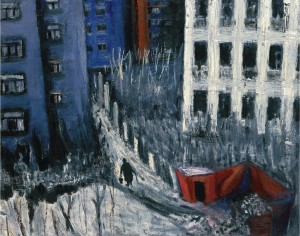So where then does the artist come in? In articles, in catalogues, in read and unread books that insist on the existence of the past with paranoiac persistence? In the halls of museums hung with pictures of masters from bygone days? Where does an artist fulfil his existence? Before whom? Before critics? Before the spectator, the customer, or the collector? Before authority or the censors? Where else can he find himself but in that very same language that called to him, one of whose voices and intonations he has become, unable to be anything else?
“This language allows me to appear, insofar as it appears within me.” This is how the artist feels about his existence; this is what gives way to the question of the existence of art and the appearance of quotation marks around the word “art.” But neither leaving nor removing these quotation marks means anything in the personal experience of the artist in the contemporary world. Every mark in the text being written works only here and now.
It is very difficult not to invent art, not to invent yourself, not to anticipate how you will be perceived by those unfamiliar to you. What will they think of your emergence in any given climate of political forces and fashion trends? When will your name be written down in history?.. Not to contrive the language you speak. Not to become a shadow of your own and others’ manifestos, fantasies and records. It is difficult to be an artist of the 20th century. It is difficult to be honest.
There are many versions of “art,” with many projects of effective artistic practice being offered for development and further use. All are being discussed at once, and much points to a willingness to confine art to political, ideological, or conceptual boundaries. All too apparent is the expediency of registering one’s name as a trademark, and of starting one’s own venture under this name, or attaching it to an already-existing “brand” of artistic work. Sometimes civic courage is required in order to become a defender of ideas expounded on in texts describing art. But no less strength will be required of the artist in order to leave the zone of influence of the societal-cultural contract, where the intention to win supporters, like-minded people, and disciples prevails; and in order to arrange and rearrange the bureaucratic hierarchy of the art world, be it the official rules of the academy, of the professional creative union, or alternative systems and links of one of the schools in the realm of so-called unofficial culture.



